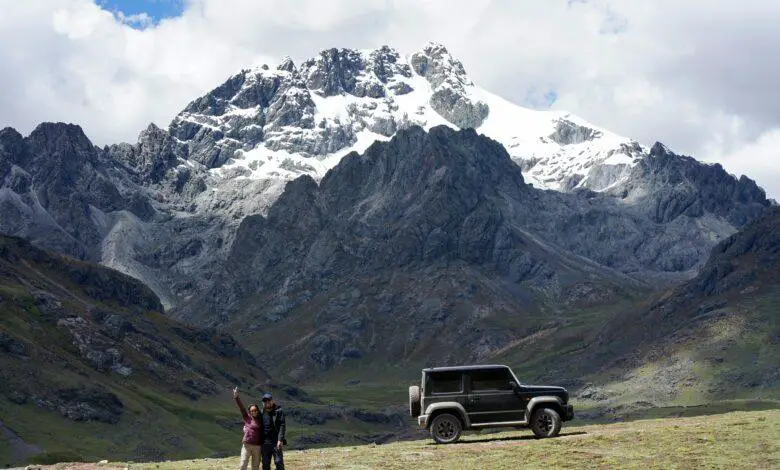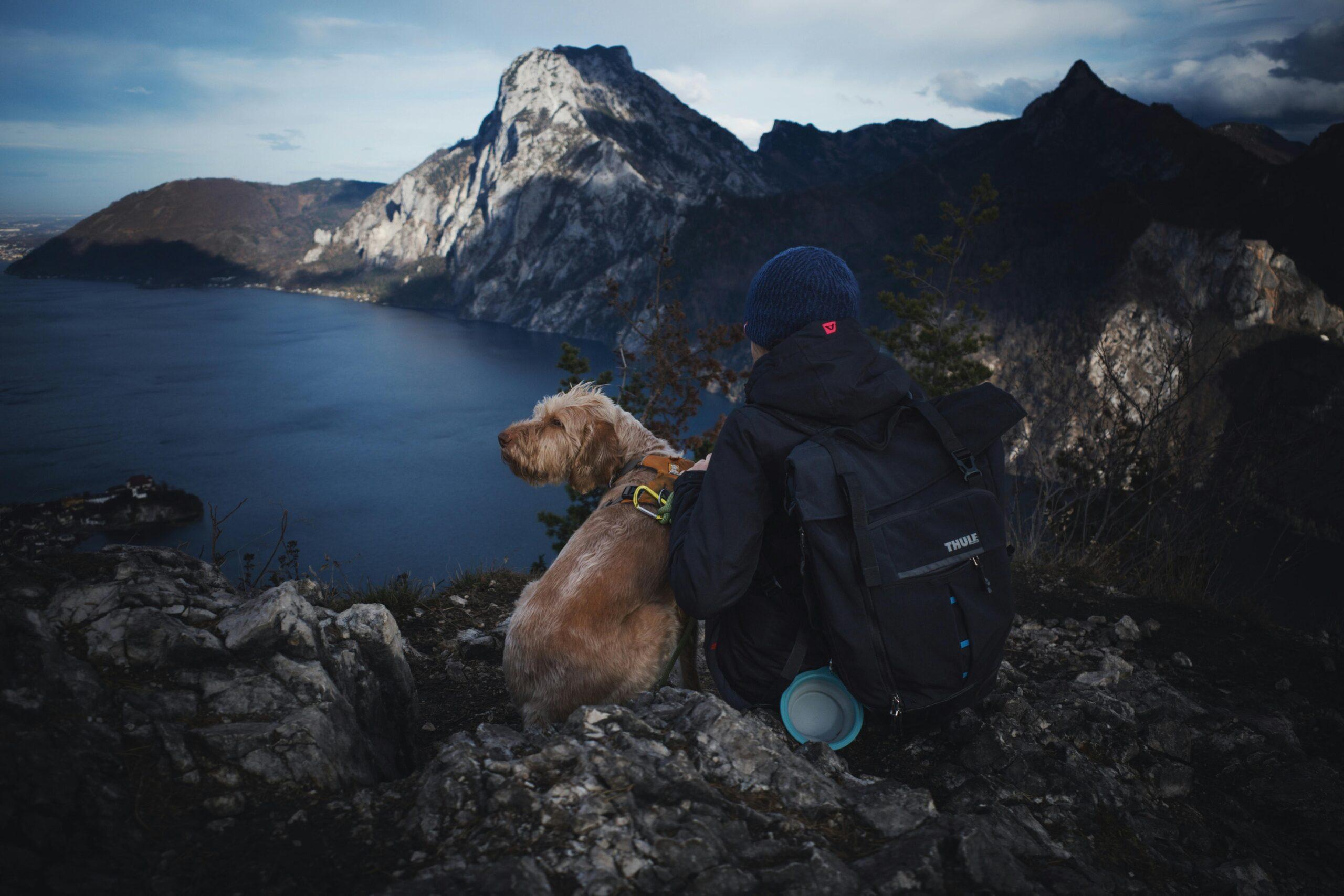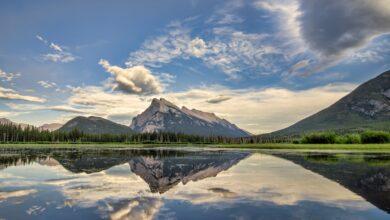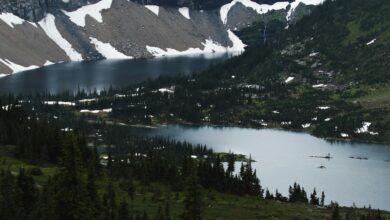🏞️ Adventure Awaits: Hiking in the Rocky Mountains 🥾
Explore Majestic Trails and Stunning Vistas in the Rockies

Introduction
Welcome to the rugged beauty of the Rocky Mountains, where adventure awaits around every corner and breathtaking vistas beckon to be explored. Lace up your hiking boots, pack your sense of adventure, and join us as we embark on a journey through some of the most spectacular trails this iconic mountain range has to offer. From novice explorers to seasoned adventurers, there’s something for everyone in the majestic Rockies.
Choosing Your Trail: Options for Every Skill Level
Easy Trails
Hiking in the Rocky Mountains offers a plethora of options for all skill levels, including beginners. Easy trails are perfect for those new to hiking or looking for a leisurely stroll amidst breathtaking scenery. These trails typically feature well-maintained paths with minimal elevation gain, making them accessible to almost everyone. Families with young children or individuals seeking a relaxed outdoor experience will find these trails enjoyable. Some popular easy trails include the Johnston Canyon Trail in Banff National Park and the Emerald Lake Loop in Yoho National Park.
Moderate Trails
For hikers with a bit more experience and fitness level, moderate trails provide a balanced challenge without being too strenuous. These trails often feature moderate elevation gains and may include some uneven terrain or obstacles along the way. Moderate trails offer a step up from easy trails, providing hikers with a sense of accomplishment while still being manageable for most. Hikers can expect to encounter longer distances and more varied terrain compared to easy trails. Examples of moderate trails in the Rocky Mountains include the Plain of Six Glaciers Trail in Banff National Park and the Lake Agnes Tea House Trail in Lake Louise.
Challenging Trails
Experienced hikers seeking a more rugged adventure will find plenty of challenging trails in the Rocky Mountains. These trails are characterized by steep inclines, rocky terrain, and potentially hazardous conditions. Challenging trails often lead to breathtaking vistas or remote wilderness areas, rewarding hikers with unparalleled views and a sense of achievement. Proper preparation, including adequate gear and physical conditioning, is essential for tackling these trails safely. Some notable challenging trails include the Skyline Trail in Jasper National Park and the Beehive Trail in Acadia National Park.
Expert Trails
Reserved for the most seasoned hikers and outdoor enthusiasts, expert trails in the Rocky Mountains offer the ultimate test of skill, endurance, and determination. These trails are often remote and rugged, requiring advanced route-finding skills and the ability to navigate challenging terrain. Hikers can expect significant elevation gains, exposed sections, and potentially hazardous weather conditions. Venturing onto expert trails should only be attempted by those with extensive hiking experience and a thorough understanding of wilderness safety. Examples of expert trails include the Mount Temple Summit in Banff National Park and the Longs Peak Keyhole Route in Rocky Mountain National Park.
Embracing Nature’s Grandeur: Scenic Highlights Along the Trails
Nature’s grandeur unfolds along the winding trails, offering breathtaking vistas and awe-inspiring landmarks that captivate the senses. From cascading waterfalls to tranquil lakes and the vibrant presence of wildlife, each turn presents a new spectacle to behold. Hikers who traverse these paths often find themselves immersed in a realm of natural beauty, where every step leads to moments of wonder and reflection.
Majestic Waterfalls: Nature’s Cascading Symphony
The trails weave through lush forests and rocky terrain, unveiling the majestic spectacle of cascading waterfalls. These stunning natural wonders, with their thundering roar and misty veils, evoke a sense of awe and reverence among hikers. Whether it’s the towering plunge of a waterfall or the gentle cascade down moss-covered rocks, each sight leaves an indelible impression on the soul.
Serene Lakes: Reflective Oases Amidst the Wilderness
Nestled amidst the verdant landscape, serene lakes beckon weary travelers with their tranquil waters and mirror-like reflections. Surrounded by towering trees and rugged peaks, these pristine oases offer a moment of respite and contemplation. Hikers often pause by the lakeshore, mesmerized by the beauty that surrounds them, finding solace in the stillness of the water and the whispers of the wind.
Wildlife Encounters: Nature’s Living Tapestry
The trails teem with life, offering glimpses of nature’s diverse inhabitants in their natural habitat. From elusive deer grazing in meadows to colorful birds flitting among the trees, each encounter brings a sense of wonder and connection to the wilderness. Hikers share stories of chance meetings with wildlife, their hearts filled with gratitude for the privilege of witnessing such untamed beauty up close.
Spectacular Vistas: Panoramic Views that Stir the Soul
As hikers ascend to higher elevations, they are rewarded with panoramic vistas that stretch as far as the eye can see. From rugged mountaintops to expansive valleys bathed in golden light, these awe-inspiring views stir the soul and ignite a sense of adventure. Each vantage point offers a different perspective, inviting hikers to pause and marvel at the majesty of the natural world unfolding before them.
Essential Gear and Equipment for Hiking in the Rocky Mountains
Pack the Right Gear
Ensuring you have the appropriate gear for hiking in the Rocky Mountains is paramount for a safe and enjoyable experience. Start with sturdy, broken-in hiking boots with ankle support to navigate uneven terrain. Layer clothing for changing weather conditions, including moisture-wicking base layers, insulating mid-layers, and a waterproof outer shell. Don’t forget essentials like a brimmed hat, sunglasses, and sunscreen for sun protection at high altitudes.
Carry Ample Water and Nutrition
Hydration is key in the Rocky Mountains, especially at higher elevations where dehydration can occur rapidly. Pack plenty of water and consider a water filtration system for refills from natural sources. Bring high-energy snacks like nuts, dried fruits, and energy bars to maintain your energy levels throughout the hike.
Navigation Tools and Maps
Even well-marked trails can be confusing, so always carry a detailed map and compass, or a GPS device with pre-loaded maps. Familiarize yourself with the route before setting out and know how to use your navigation tools effectively.
Emergency Essentials
Be prepared for unexpected situations with a well-stocked first aid kit containing bandages, antiseptic wipes, pain relievers, and any personal medications. Additionally, pack a multi-tool, headlamp or flashlight with extra batteries, a whistle for signaling in emergencies, and a lightweight emergency shelter like a space blanket.
Other Important Items
Consider the specific needs of your hike and pack accordingly. This may include insect repellent, a lightweight stove and fuel for cooking, a small trowel for digging cat holes, and a garbage bag for carrying out trash. Always err on the side of caution and be prepared for any scenario you may encounter on the trail.
Safety Precautions and Guidelines for Outdoor Adventurers
Assess Your Fitness Level and Skills
Before embarking on a hike in the Rocky Mountains, honestly evaluate your physical fitness and hiking abilities. Choose trails that match your experience level and gradually increase difficulty as you gain more experience. Be aware of your limitations and don’t push yourself beyond what you can safely handle.
Check Weather Conditions
Weather in the Rocky Mountains can change rapidly and dramatically, so always check the forecast before heading out. Be prepared for temperature fluctuations, sudden storms, and high winds. If severe weather is predicted, consider postponing your hike or choosing a safer alternative.
Share Your Plans
Inform someone reliable of your hiking plans, including your intended route, expected return time, and emergency contact information. If possible, hike with a companion or in a group, as there is safety in numbers. Establish regular check-in times with your designated contact person.
Stay on Designated Trails
Stick to established trails to minimize environmental impact and reduce the risk of getting lost or injured. Avoid taking shortcuts or creating new trails, as this can cause erosion and disrupt wildlife habitats. Respect any trail closures or restrictions for conservation purposes.
Practice Leave No Trace Principles
Follow Leave No Trace principles to minimize your impact on the environment and preserve the beauty of the Rocky Mountains for future generations. Pack out all trash, dispose of waste properly, and avoid disturbing wildlife or vegetation. Leave natural objects and cultural artifacts untouched for others to enjoy.

The Rewards of Hiking: Personal Reflections and Growth
Stories of Personal Achievements and Memorable Moments on the Trails
Embarking on hiking adventures often leads to unforgettable experiences and personal triumphs. Each journey through the wilderness brings with it a plethora of stories waiting to be told. Whether it’s conquering a challenging summit, navigating through rugged terrain, or simply taking in breathtaking views, every step on the trail holds the potential for discovery and accomplishment.
Insights into the Physical and Mental Benefits of Hiking in Nature
Beyond the surface beauty of scenic landscapes, hiking offers numerous physical and mental rewards. The rhythmic motion of walking stimulates circulation, strengthens muscles, and improves cardiovascular health. Meanwhile, the serenity of nature serves as a natural stress reliever, promoting mental clarity and emotional well-being. Studies have shown that spending time outdoors can reduce symptoms of anxiety and depression, while also enhancing cognitive function and creativity.
Reflections on the Transformative Power of Outdoor Adventures in the Rockies
The majestic beauty of the Rocky Mountains serves as a backdrop for profound personal transformation. Immersed in the grandeur of these towering peaks, hikers often find themselves confronted with their own inner challenges and limitations. Yet, it is through overcoming these obstacles that true growth occurs. Whether it’s pushing past physical barriers or confronting fears, the journey through the Rockies becomes a metaphor for life itself—a testament to resilience, determination, and the indomitable human spirit.
FAQs
Q. Is it safe to hike in the Rocky Mountains? A. Hiking in the Rocky Mountains can be safe if you take necessary precautions. Be sure to check weather conditions before heading out, carry proper gear including plenty of water, a map, and a first aid kit, and let someone know your itinerary. It’s also important to be aware of wildlife in the area and to follow any guidelines or warnings provided by park authorities.
Q. What should I pack for a hike in the Rocky Mountains? A. When hiking in the Rocky Mountains, it’s essential to pack appropriately for the terrain and potential weather changes. Some essentials to include are sturdy hiking boots, layers of clothing for warmth, plenty of water, high-energy snacks, a map and compass (or GPS), a first aid kit, sunscreen, insect repellent, and a flashlight or headlamp with extra batteries. It’s also wise to bring a whistle and a multi-tool or knife.
Q. Are there any dangerous animals I should be aware of while hiking in the Rocky Mountains? A. Yes, there are several potentially dangerous animals in the Rocky Mountains, including bears, mountain lions, and rattlesnakes. It’s crucial to be informed about how to behave in encounters with wildlife. Carry bear spray, make noise while hiking to avoid surprising animals, and know how to react if you encounter one. Additionally, keep food stored securely to avoid attracting animals to your campsite.
Q. What is the best time of year to hike in the Rocky Mountains? A. The best time to hike in the Rocky Mountains depends on personal preferences and the specific trails you plan to explore. Generally, late spring through early fall offers the most favorable weather conditions, with warm temperatures and minimal snow. However, certain trails may be crowded during peak summer months. Spring and fall can provide quieter hiking experiences, but weather conditions can be more variable, with the possibility of snow at higher elevations. Winter hiking is also possible but requires additional preparation for cold temperatures and snow-covered trails.
Conclusion
As we bid farewell to the majestic peaks and verdant valleys of the Rocky Mountains, we carry with us not just memories, but a deep appreciation for the transformative power of nature. Each step taken on these trails is not just a physical journey but a soul-stirring odyssey that leaves an indelible mark on our hearts and minds. Whether it’s the challenge of conquering a summit or the serenity of a quiet forest path, hiking in the Rockies offers a chance to reconnect with the natural world and rediscover the adventurer within. So, as you plan your next outdoor escapade, remember: adventure awaits in the majestic embrace of the Rocky Mountains.
UP NEXT
https://touristeyes.com/sleeping-in-riads-marrakech/





Facebook Comments